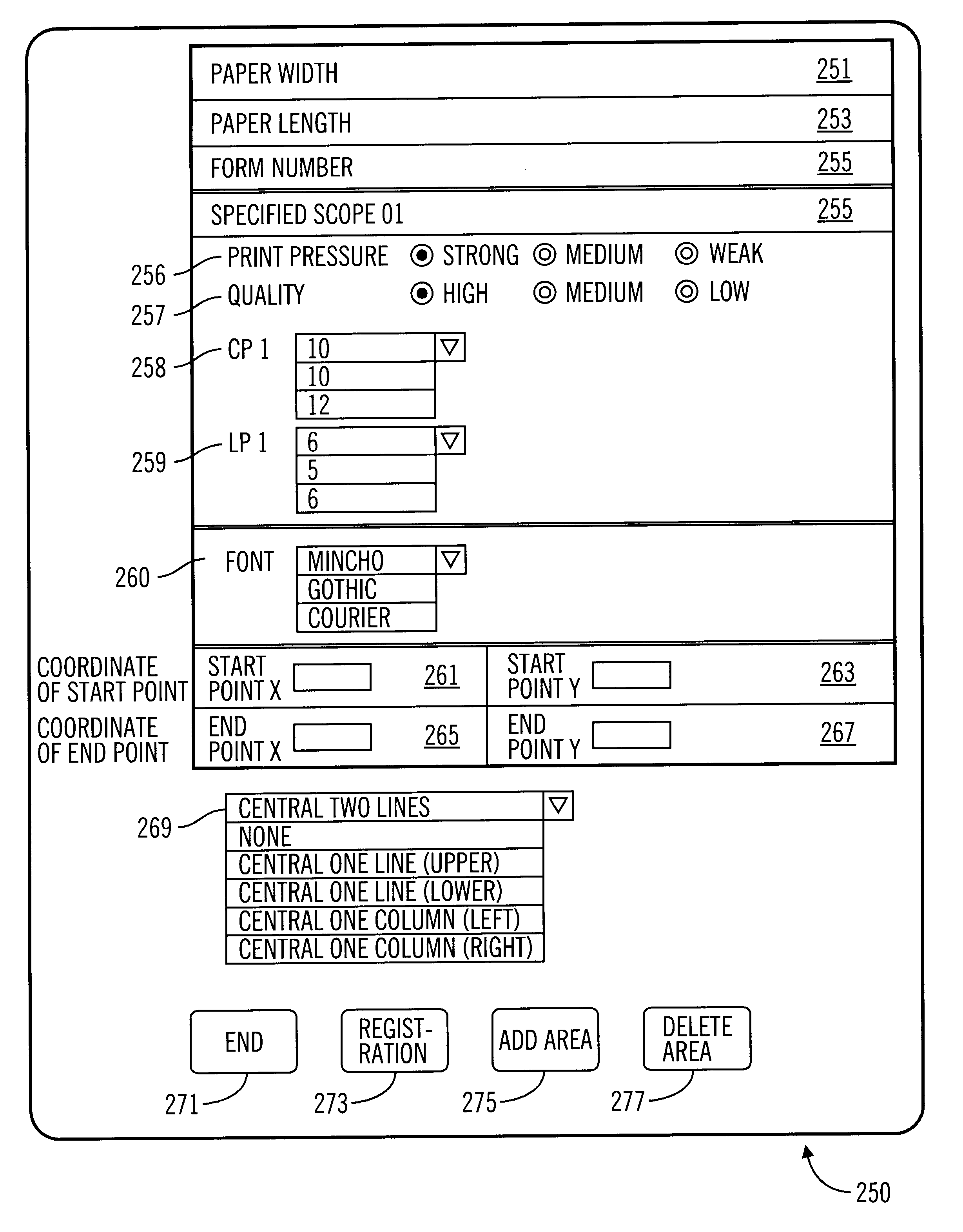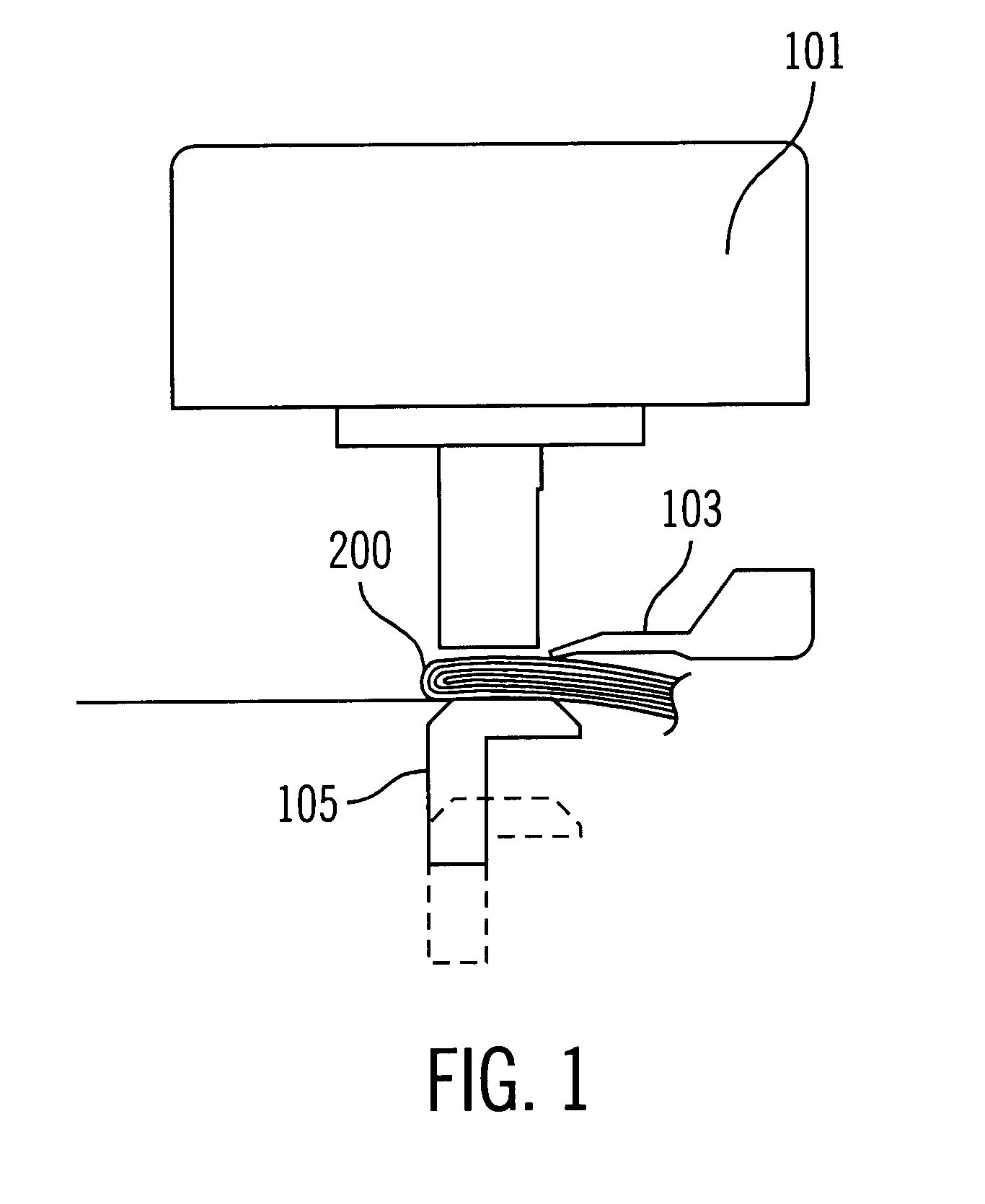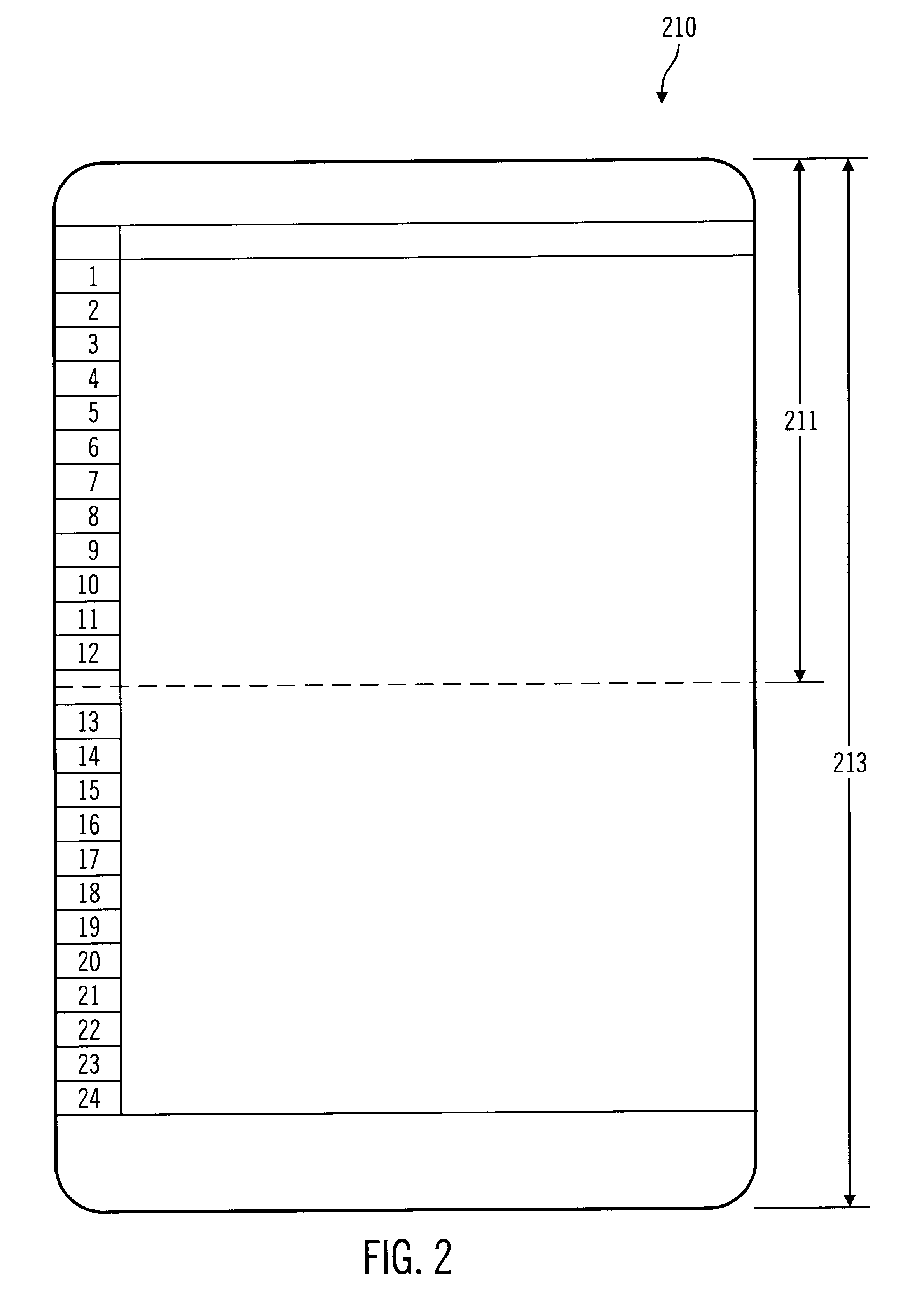Method, apparatus, and program for printing using modified print attributes
a technology of print attributes and print attributes, applied in the field of impact printers, can solve the problems of increased power consumption, high print pressure setting of all types of media, and increased power consumption
- Summary
- Abstract
- Description
- Claims
- Application Information
AI Technical Summary
Problems solved by technology
Method used
Image
Examples
Embodiment Construction
A. System Configuration
FIG. 1 illustrates a printer 100 with a medium 200 inserted according to one embodiment of the present invention. FIG. 5 illustrates a block diagram of the electronic components of the printer 100.
With respect to FIG. 5, CPU 145 is electrically coupled to various sensors 121, 123, 125, 127, 129, and 141, a drive circuit 161, an operator panel 143, and various memory devices 147, 149, and 167. The CPU 145 receives signals from the various sensors to control drive circuit 161 in accordance with a control program stored in the various memory devices. For one embodiment of the present invention, the CPU 145 and / or drive circuit 161 may be referred to as a control circuit. The operator panel 143 is used for the user input and includes a display panel.
FIG. 4 illustrates components in the paper path of the printer. The media in sensor (i.e. an insertion entrance sensor) 121 detects the insertion of a medium 200, such as the paper, into printer 100. The top edge senso...
PUM
 Login to View More
Login to View More Abstract
Description
Claims
Application Information
 Login to View More
Login to View More - R&D
- Intellectual Property
- Life Sciences
- Materials
- Tech Scout
- Unparalleled Data Quality
- Higher Quality Content
- 60% Fewer Hallucinations
Browse by: Latest US Patents, China's latest patents, Technical Efficacy Thesaurus, Application Domain, Technology Topic, Popular Technical Reports.
© 2025 PatSnap. All rights reserved.Legal|Privacy policy|Modern Slavery Act Transparency Statement|Sitemap|About US| Contact US: help@patsnap.com



